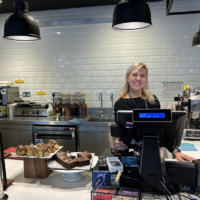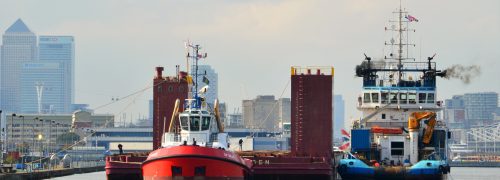
People
Showcase: Andrew Christy documents docks’ shipping whatever the weather
Anyone with a passing interest in Royal Docks history will have heard the tales of a quayside swarming with dockworkers and goods arriving here from all corners of the world. This area’s majestic enclosed docks were once the world’s largest.
The days as London’s most important port are long gone. But slipping past relatively unnoticed are still a steady stream of ships moving in and out of the dock. They provoked the curiosity of local photographer Andrew Christy, and he began to document their movements. Now, not a boat can enter or leave the docks without Andrew noting its passage.
He told us about his love for unsung heroes and why the Royal Docks has always been a pioneer of transport innovation.
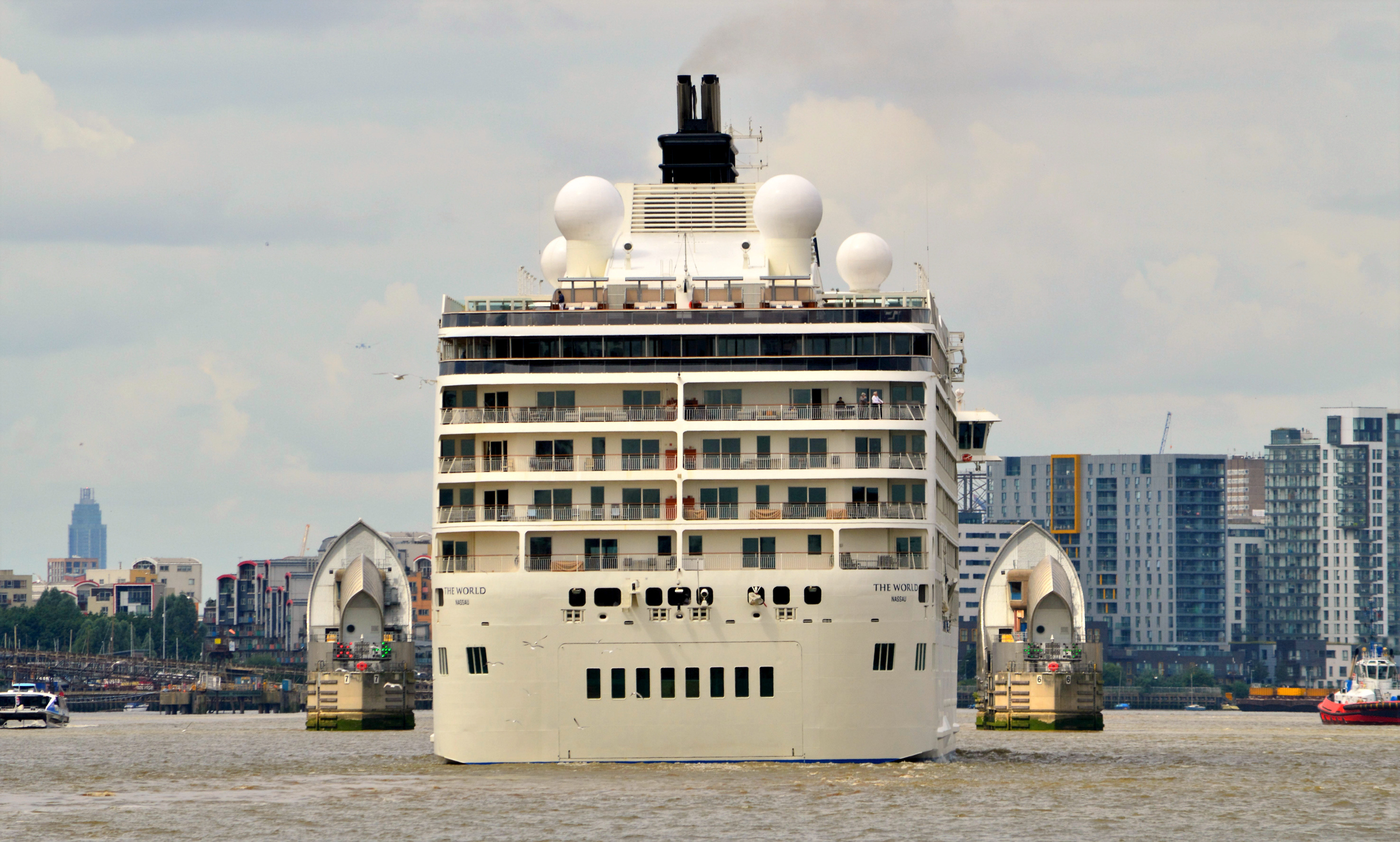
The World cruise ship docks
The World is a particularly unusual cruise ship – people can opt to live on the boat full-time as it sails all over the globe.
You started off plane-spotting at London City Airport, which turned into boat spotting on the Thames and the docks. What sparked your interest?
My interest in transport technology was piqued by the vessels that were going past my window every day. Me being the inquisitive type, it wasn't enough just to enjoy watching them. I wanted to know who they were, where they came from, what they were doing, why they were doing it. Over the course of a year or so, that became an obsession, wanting and trying to catalogue almost everything that moved in and out of the docks.
So that led me to being out, standing on the Bascule Bridge at three in the morning in a light drizzle. You just stand there thinking, “Why am I doing this?” It's a case of, “Well, I'm doing it for me.” My photography has always been driven by my desire to have a record of things that I've experienced, never by any great intention of sharing them more widely.
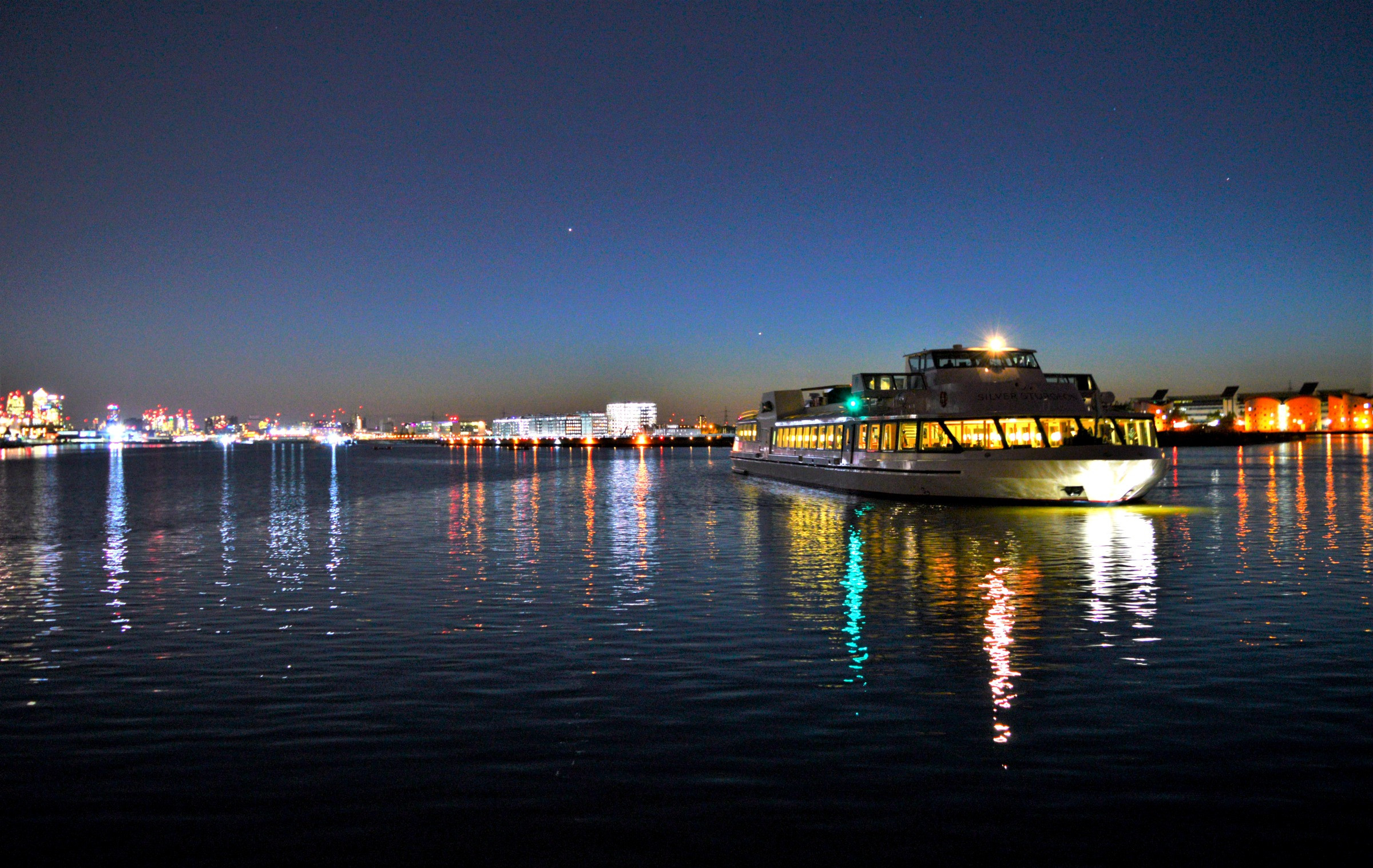
The Silver Sturgeon
This contemporary river yacht is a regular sight from Bascule Bridge.
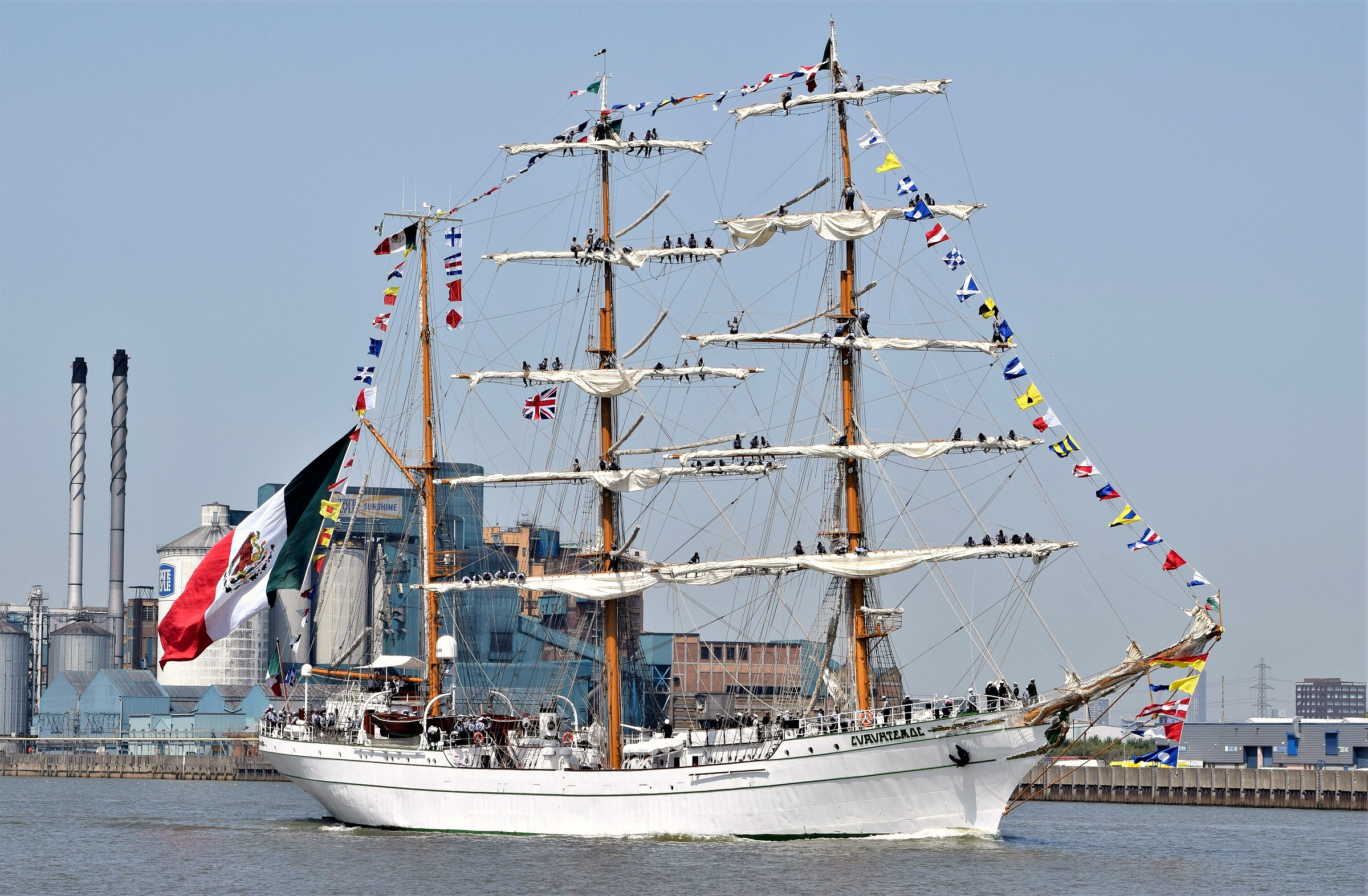
ARM Cuauhtémoc
ARM Cuauhtémoc at Woolwich Reach.
Over the years, what are the vessels that have stood out as special?
At a really geeky, anorak-y level, everything's special. The big shiny cruise ships tend to get a lot of attention. The rubbish barges aren’t that pretty, but they are the core and the heart of the Thames as a living working waterway, ever since Roman times. I wanted to reflect a bit of that, the essential nature of how much London depends on the river.
I like seeing the tall sailing ships, especially when they are carrying some sail. Secondary to that, some of the foreign visiting warships rank up there as the most interesting through rarity.
Just two years ago now we had three visiting Chinese navy warships, one of which, fortunately, came into the Royal Docks. Even though the vessel that was in the Royal Docks was the support tanker and was overlooked by a lot of the media, it was actually the most important of the three ships because the other two couldn't have got here without it. I like the unsung hero support vessels rather than the big shiny things that actually are not the real story: the real story was that the Chinese had developed this fleet of support tankers that can enable other vessels to circumnavigate the globe.
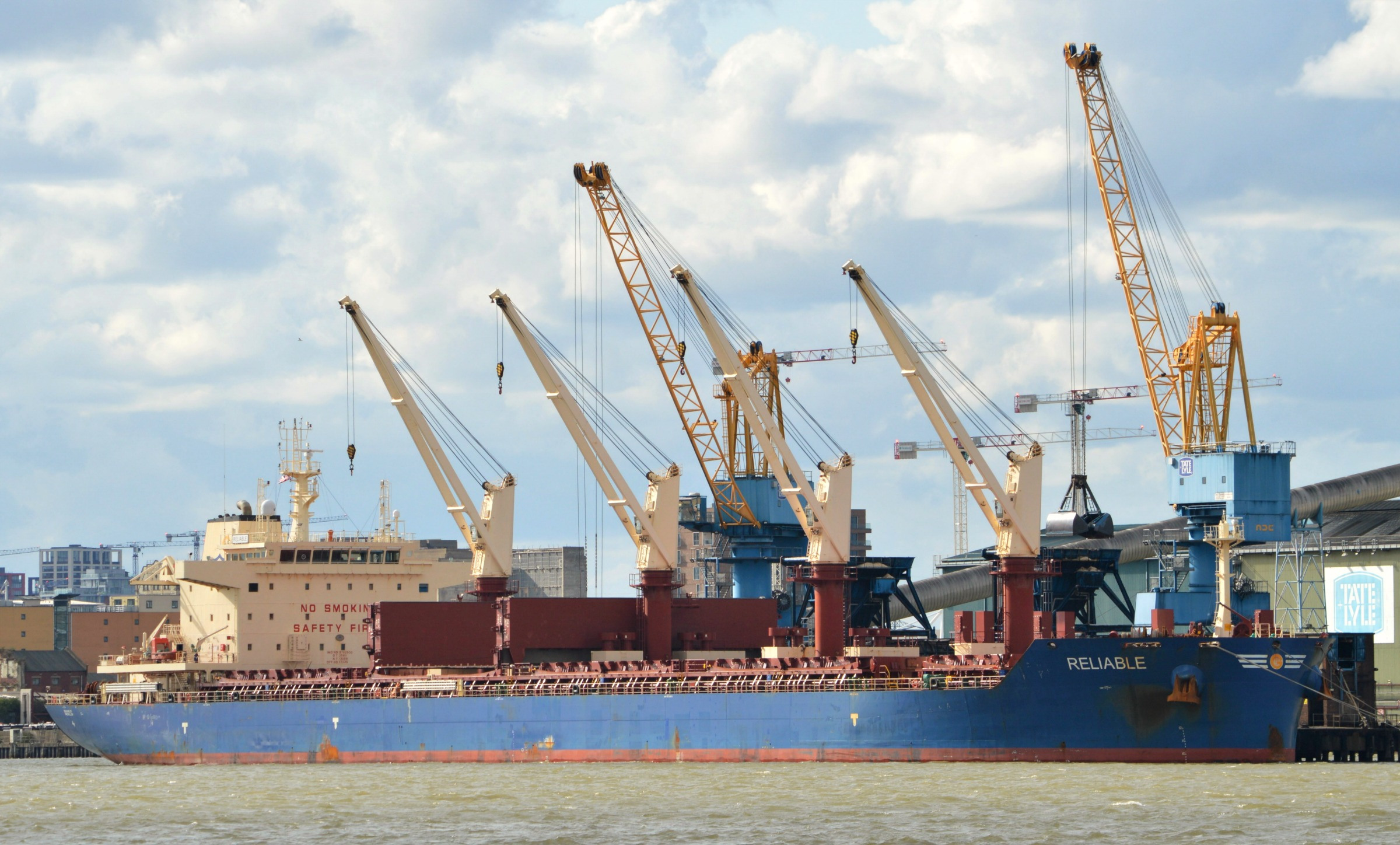
The Reliable cargo ship
The famous Tate & Lyle factory is visible in the background.
I like the unsung hero support vessels rather than the big shiny things that actually are not the real story.
Andrew Christy
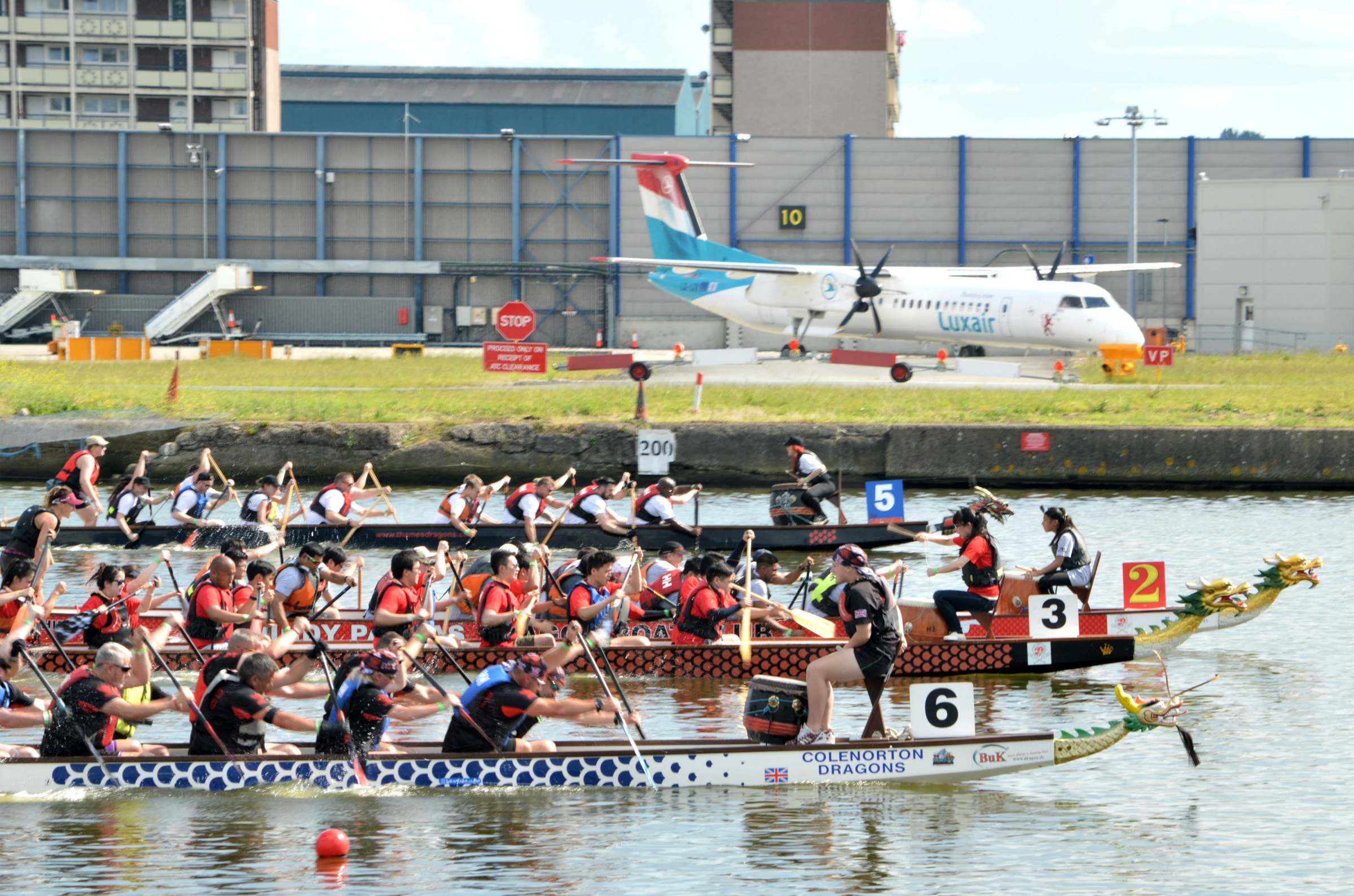
Dragon boat racing
It's not just working vessels in the docks – there's always time a little fun on the water, too.
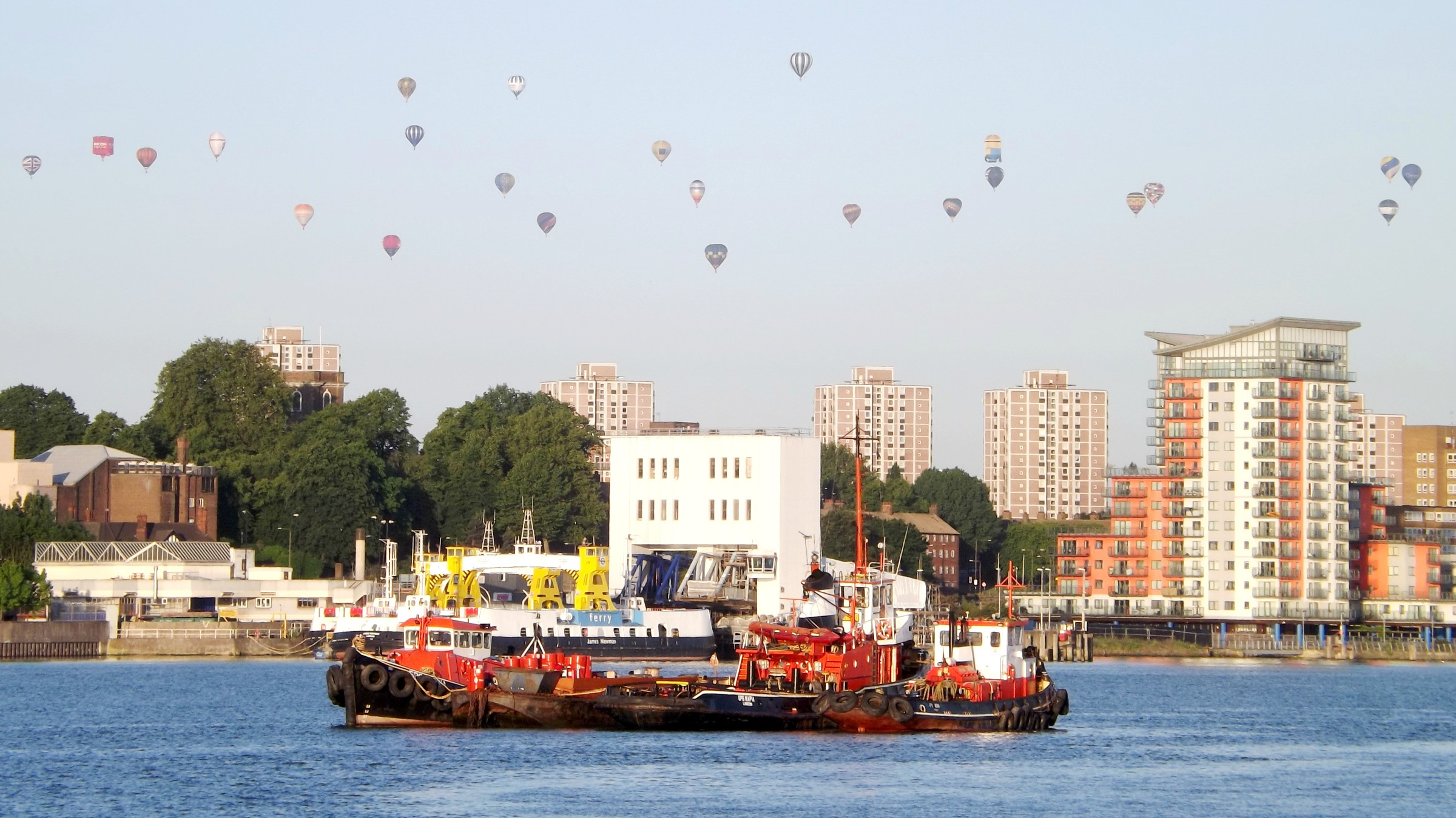
Capturing the unusual
As well as boats, Andrew always has his eye on anything unusual that comes into view.
Do you still try and document everything that comes in and out of the Royal Docks?
Pretty much. I try and keep a written record of all the visitors.
How many boats are we talking a month?
You're probably looking at 20 to 30 vessel movements a month through the Royals at the moment, most of that into the King George V Dock with City Airport. One or two boats a month going up to ExCeL. The view of London from the river is one of the most impressive sights. If you're coming in from the Royal Docks into the centre of town, the approach up the river through the Thames Barrier to the O2 and then past Greenwich into the City of London itself — I've seen that view hundreds and hundreds of times, and it never fails to impress.
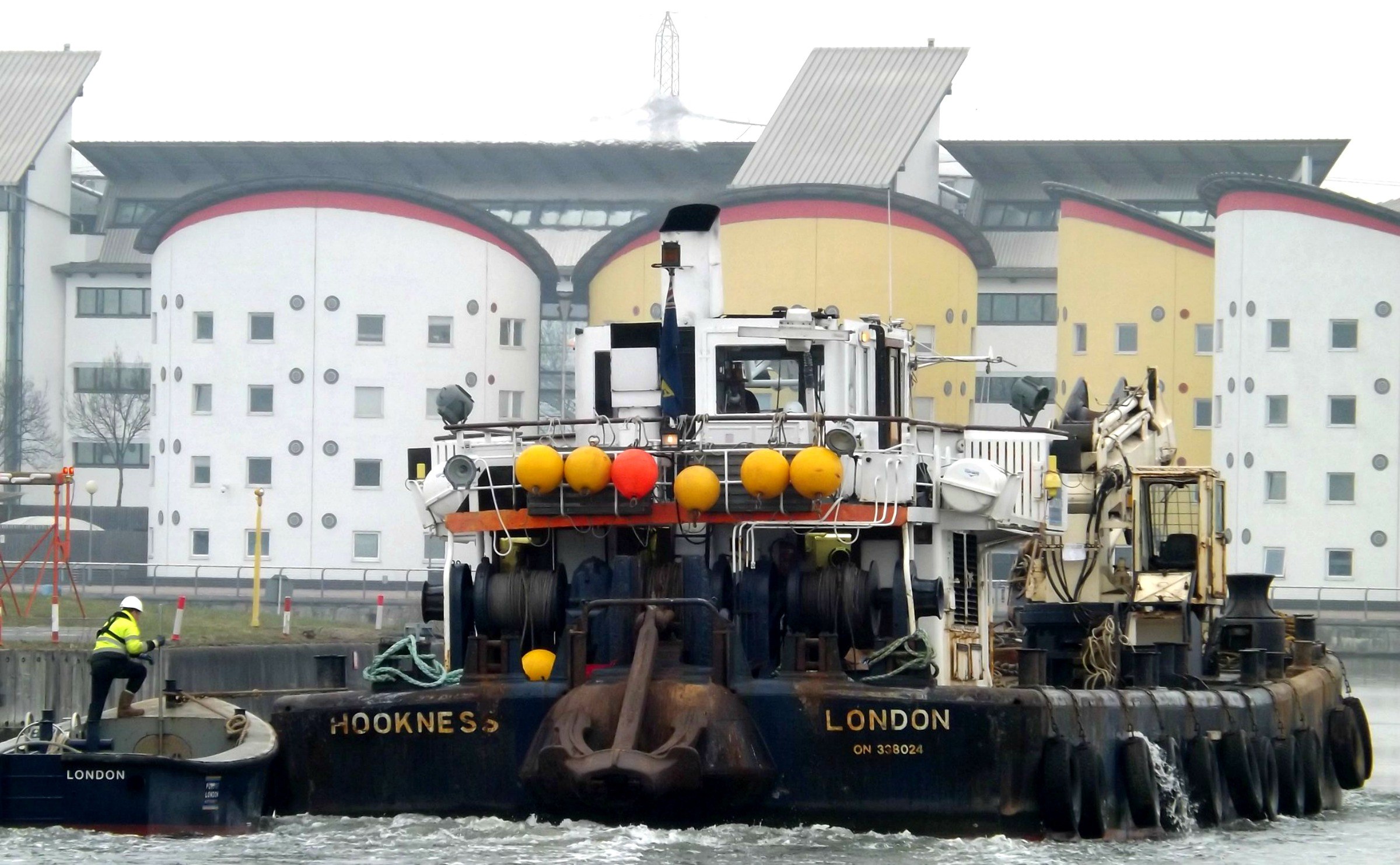
Hookness in the Royal Docks
Andrew Christy estimates that between 20-30 vessels move through the Royal Docks every month.
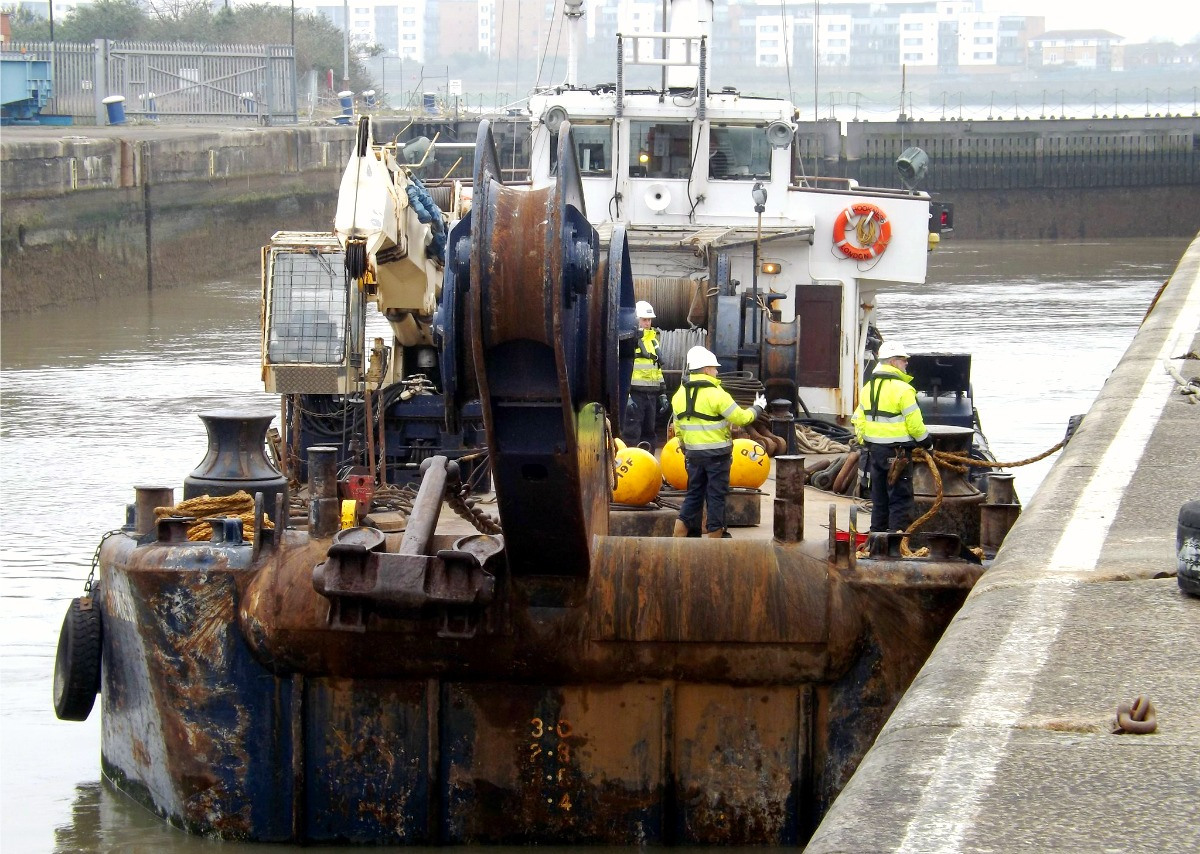
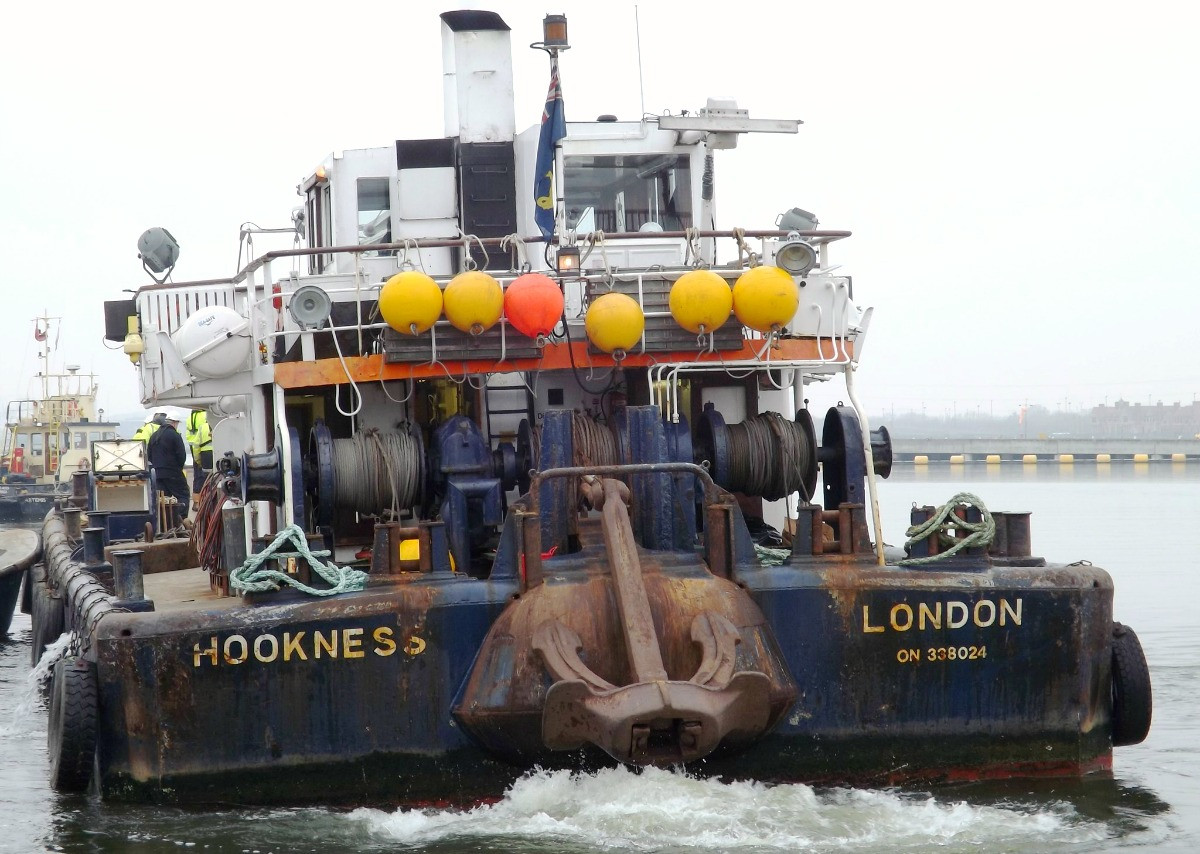
Salvage vessel in action
The 1960s salvage vessel was replaced by London Titan in 2015.
The Royal Docks has a history of innovation on the water, and it is still very much part of the cutting edge.
Absolutely. The Royal Docks invented a lot of port technology. Some of it has been maintained, some of it's developed and evolved into other things, and sadly some of the successes that the Royal Docks helped create actually led to its downfall.
Because of containerisation?
That's right. Once you've built a dock system with locks, it's really difficult and expensive to expand them. Panama Canal recently went through an expansion process to widen all the waterways, and you're talking eye-watering sums of money.
Some of the older technology is still in active use today, and hasn't yet been bettered. The KGV lock was built just over 100 years ago, and it's the same basic technology that's still in use today. The forerunners for that go back into Roman times when they developed lock and canal systems for transporting stuff. For me, it's almost as fascinating watching the lock process work as it is to watch the boat coming through.
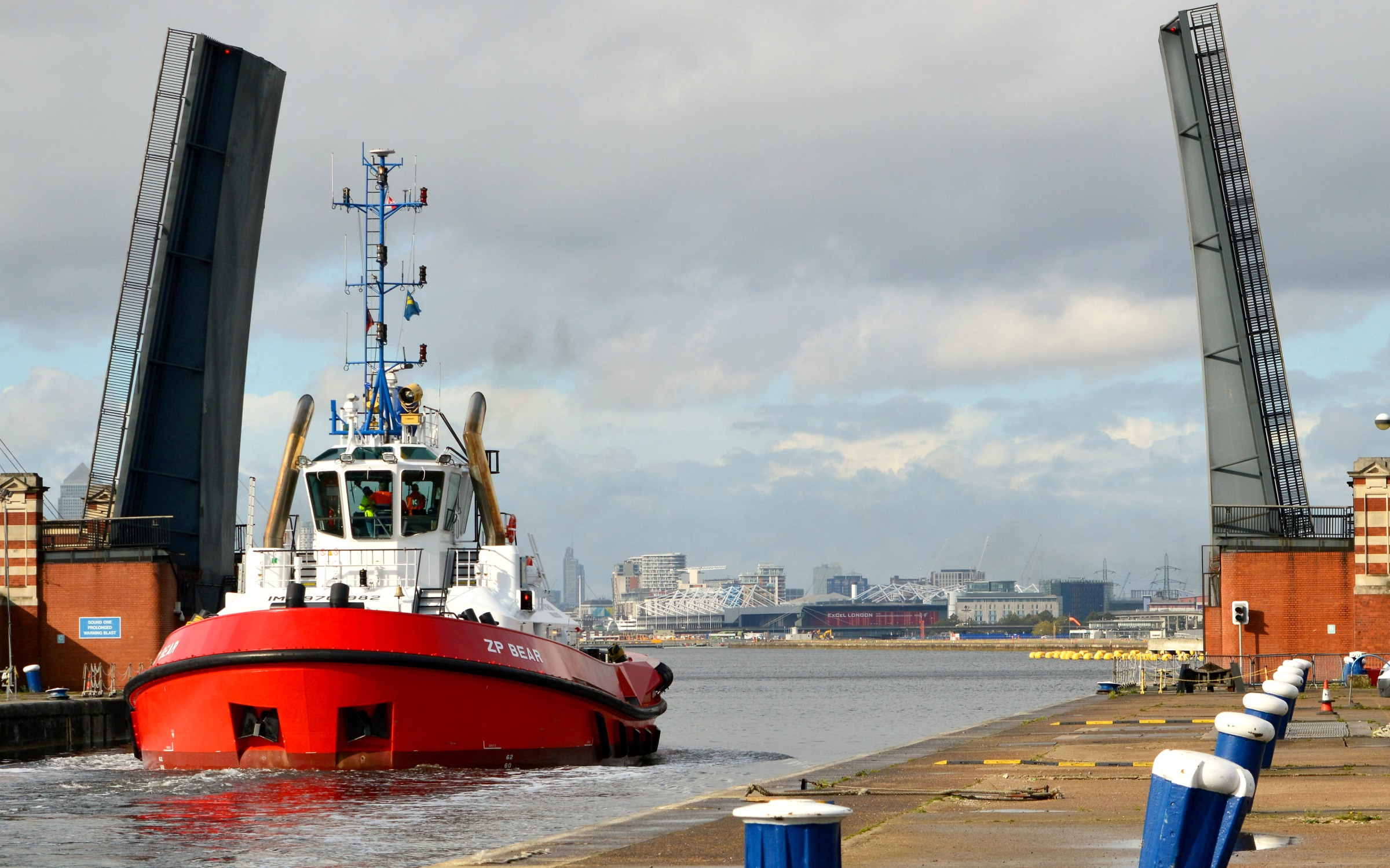
ZP Bear tug boat coming through the King George V lock
The King George V lock in action.
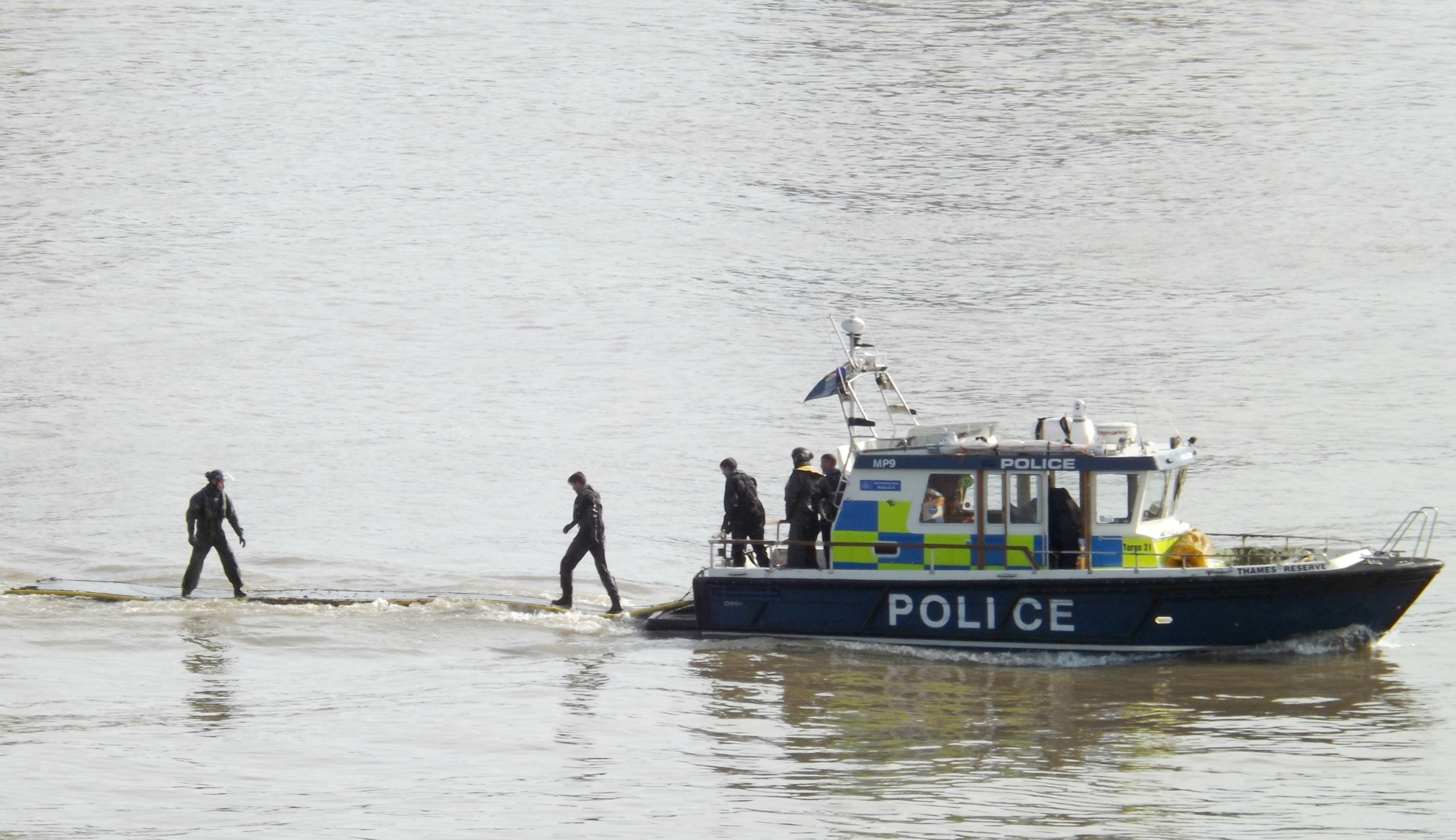
Police Training
Here, the Metropolitan Police are practicing the use of their floating mud rescue mats on the Thames.
As a young child, I was lucky that my parents and grandparents tolerated my weird and wonderful interest in things that moved or didn't move, and on the back of that that I got interested in science and technology. I would like to think that future generations of youngsters are seeing some of this and thinking, “I want to get involved in that.” The Queen Mary University which hopefully will come in to being on Albert Island is a good part of that, but we need to be getting early teenagers involved too.
The UK has always been really good at innovating, and I hope we can continue to do that. I really hope that the Royal Docks can be this beating heart of new technology, new innovation. Whether it's in the transport sector or not doesn't really matter, but I want to see it being the place to be.
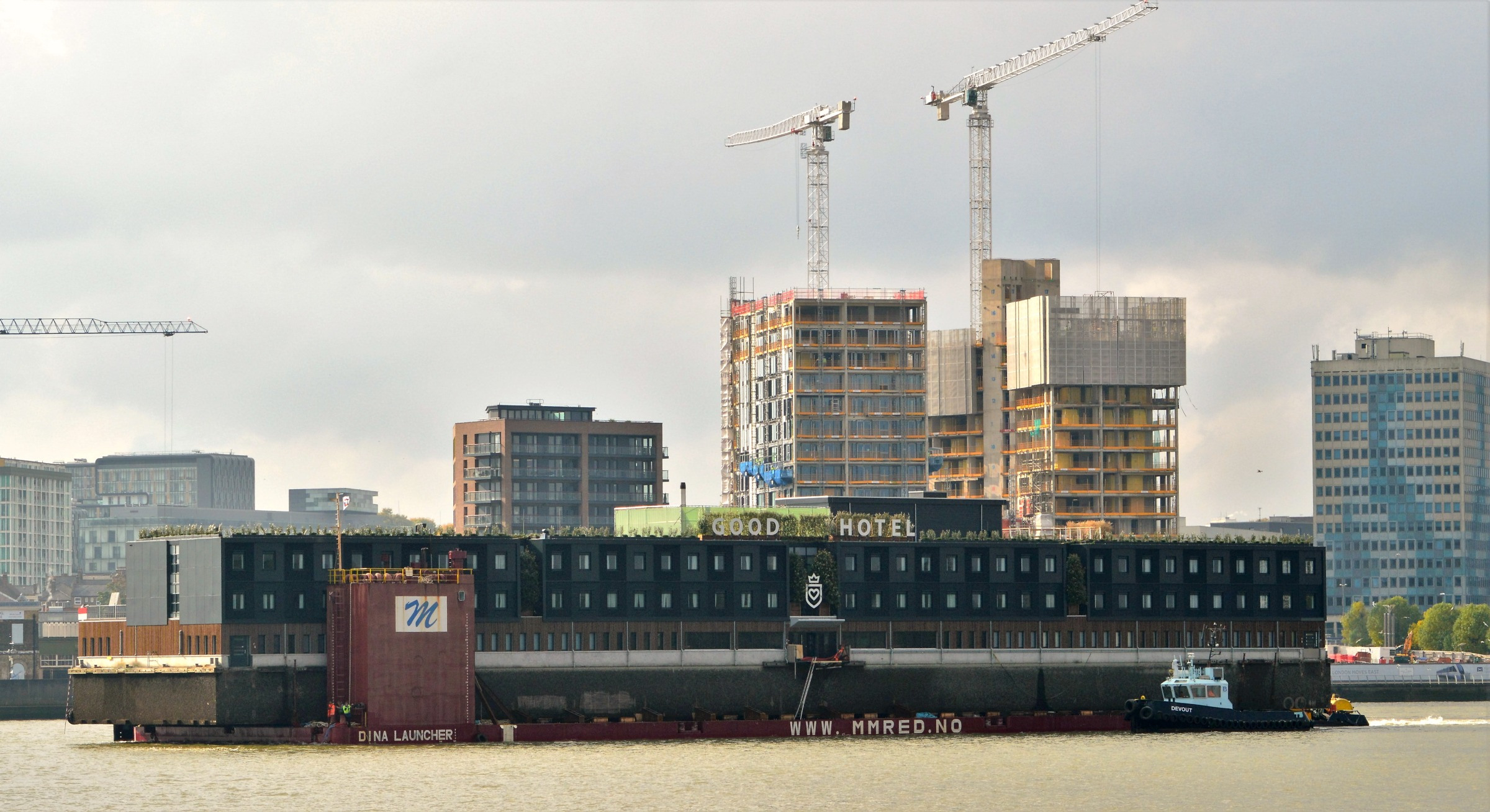
The Good Hotel moves to town
The Good Hotel is a floating hotel that has made its way from Amsterdam.
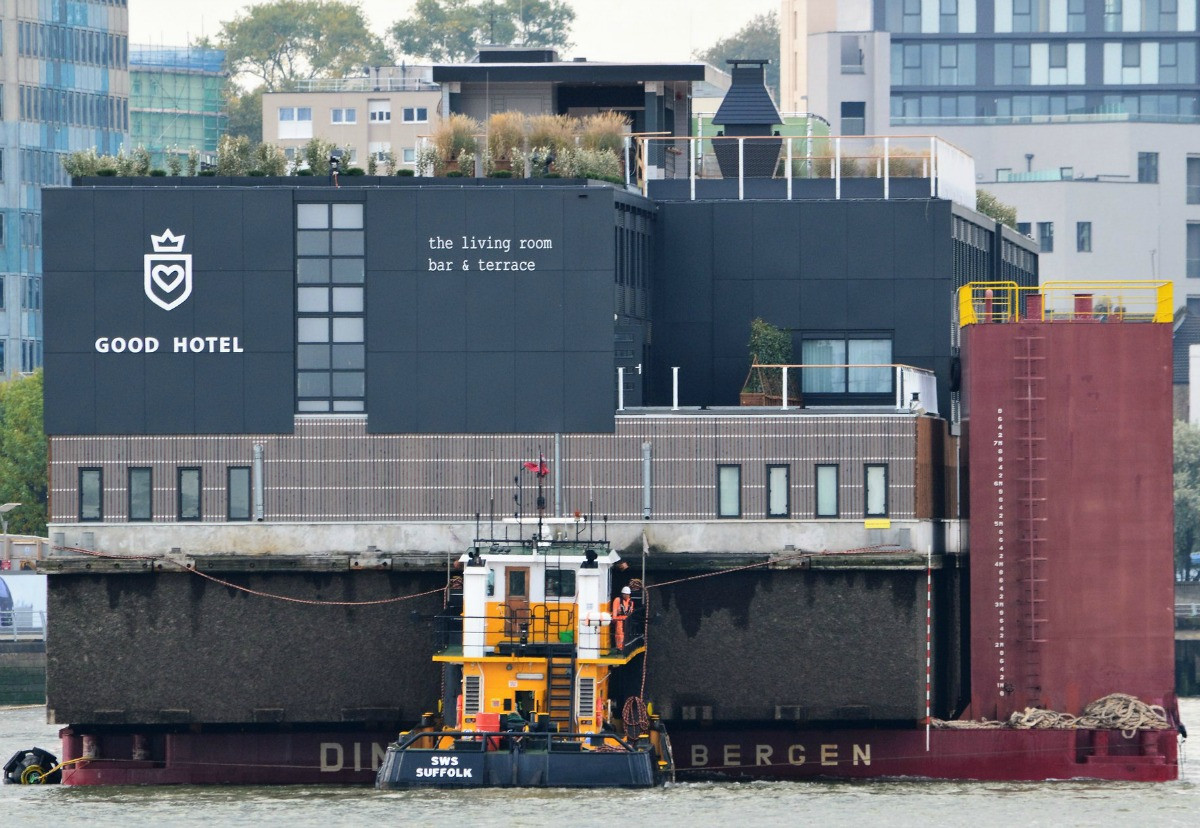
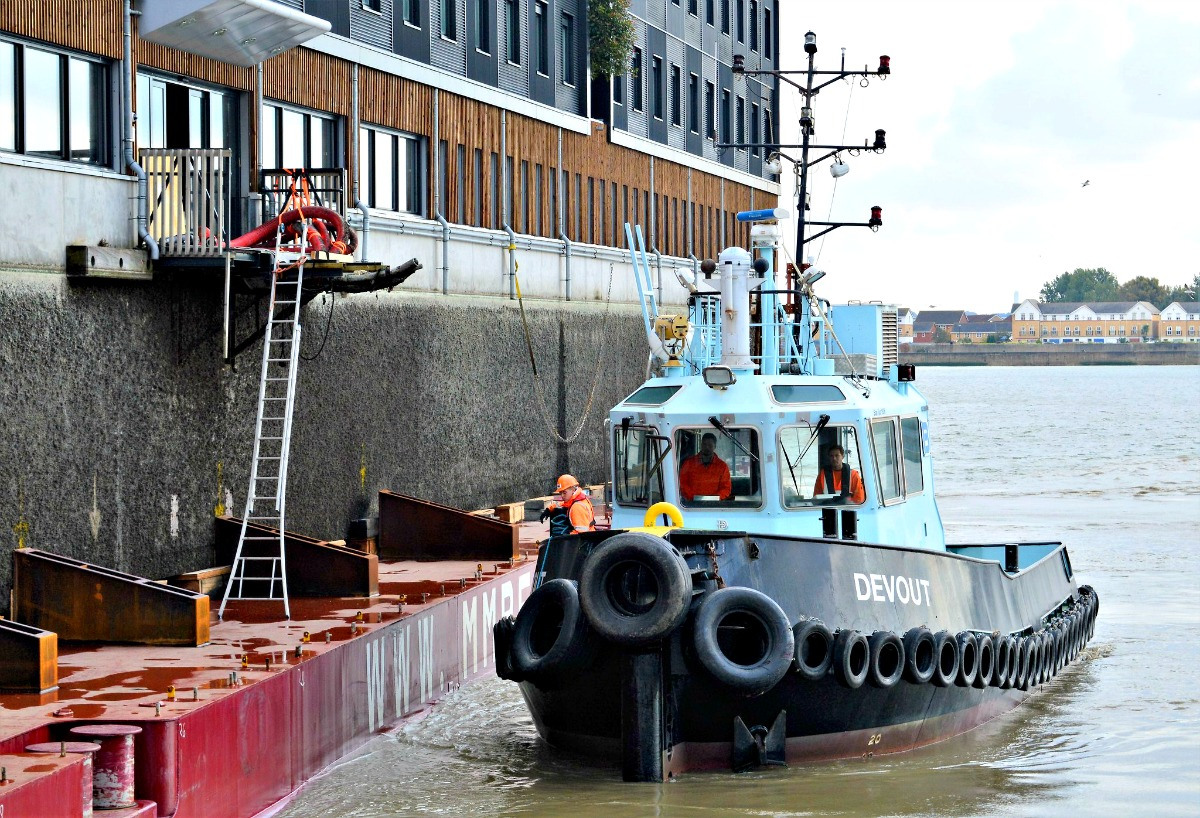
The hardest part? Getting through the King George V lock with just a metre on either side.

